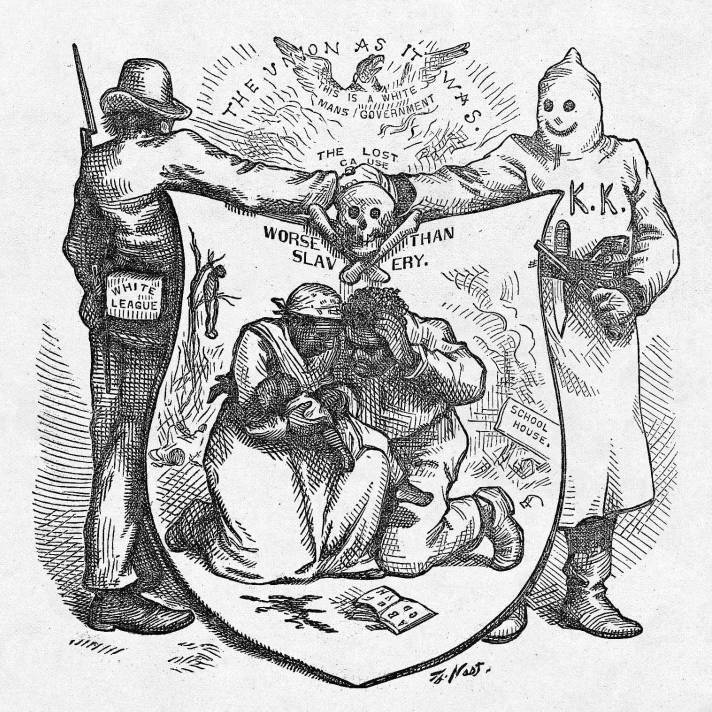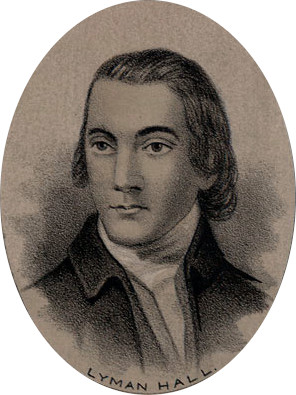|
Seal Of Georgia (U.S. State)
The Great Seal of the State of Georgia is a device that has historically been used to authenticate government documents executed by the state of Georgia. The first great seal of the state was specified in the State Constitution of 1777, and its current form was adopted in 1799 with alterations in 1914. Its specifications are currently spelled out by statute. Description The original seal from 1777 was specified as such: "The great seal of this State shall have the following device: on one side of a scroll, whereon shall be engraved “The Constitution of the State of Georgia;” and the motto “Pro bono publico.” On the other side, an elegant house, and other buildings, fields of corn, and meadows covered with sheep and cattle; a river running through the same, with a ship under full sail, and the motto, “Deus nobis haec otia fecit.” On February 8, 1799 an Act of the Legislature stated the seal as "On the one side a view of the seashore with a ship bearing the flag of ... [...More Info...] [...Related Items...] OR: [Wikipedia] [Google] [Baidu] |
Historical Coats Of Arms Of The U
History (derived ) is the systematic study and the documentation of the human activity. The time period of event before the invention of writing systems is considered prehistory. "History" is an umbrella term comprising past events as well as the memory, discovery, collection, organization, presentation, and interpretation of these events. Historians seek knowledge of the past using historical sources such as written documents, oral accounts, art and material artifacts, and ecological markers. History is not complete and still has debatable mysteries. History is also an academic discipline which uses narrative to describe, examine, question, and analyze past events, and investigate their patterns of cause and effect. Historians often debate which narrative best explains an event, as well as the significance of different causes and effects. Historians also debate the nature of history as an end in itself, as well as its usefulness to give perspective on the problems of the p ... [...More Info...] [...Related Items...] OR: [Wikipedia] [Google] [Baidu] |
Georgia During Reconstruction
At the end of the American Civil War, the devastation and disruption in the state of Georgia were dramatic. Wartime damage, the inability to maintain a labor force without slavery, and miserable weather had a disastrous effect on agricultural production. The state's chief cash crop, cotton, fell from a high of more than 700,000 bales in 1860 to less than 50,000 in 1865, while harvests of corn and wheat were also meager."Reconstruction in Georgia" , ''New Georgia Encyclopedia''. The state government subsidized construction of numerous new railroad lines. White farmers turned to cotton as a cash crop, often using commercial fertilizers to make up for the poor soils they owned. The coastal rice plantations never recovered from the war. Bartow County was representative of the postwar diff ... [...More Info...] [...Related Items...] OR: [Wikipedia] [Google] [Baidu] |
Undergraduate
Undergraduate education is education conducted after secondary education and before postgraduate education. It typically includes all postsecondary programs up to the level of a bachelor's degree. For example, in the United States, an entry-level university student is known as an ''undergraduate'', while students of higher degrees are known as ''graduate students''. Upon completion of a number of required and elective courses as part of an undergraduate program, the student would earn the corresponding degree. (In some regions, individual "courses" and the "program" collection are given other terms, such as "units" and "course", respectively.) In some other educational systems, undergraduate education is postsecondary education up to the level of a master's degree; this is the case for some science courses in Britain and some medicine courses in Europe. Programs Africa Nigerian system In Nigeria, undergraduate degrees (excluding Medicine, Medical Laboratory Science, Nursing, E ... [...More Info...] [...Related Items...] OR: [Wikipedia] [Google] [Baidu] |
First Year
A freshman, fresher, first year, or frosh, is a person in the first year at an educational institution, usually a secondary school or at the college and university level, but also in other forms of post-secondary educational institutions. Arab world In much of the Arab world, a first-year is called a "Ebtidae" (Pl. Mubtadeen), which is Arabic for "beginner". Brazil In Brazil, students that pass the vestibulares and begin studying in a college or university are called "calouros" or more informally "bixos" ("bixetes" for girls), an alternate spelling of "bicho", which means "animal" (although commonly used to refer to bugs). Calouros are often subject to hazing, which is known as "trote" (lit. "prank") there. The first known hazing episode in Brazil happened in 1831 at the Law School of Olinda and resulted in the death of a student. In 1999, a Chinese Brazilian calouro of the University of São Paulo Medicine School named Edison Tsung Chi Hsueh was found dead at the institution' ... [...More Info...] [...Related Items...] OR: [Wikipedia] [Google] [Baidu] |
Cast Iron
Cast iron is a class of iron–carbon alloys with a carbon content more than 2%. Its usefulness derives from its relatively low melting temperature. The alloy constituents affect its color when fractured: white cast iron has carbide impurities which allow cracks to pass straight through, grey cast iron has graphite flakes which deflect a passing crack and initiate countless new cracks as the material breaks, and ductile cast iron has spherical graphite "nodules" which stop the crack from further progressing. Carbon (C), ranging from 1.8 to 4 wt%, and silicon (Si), 1–3 wt%, are the main alloying elements of cast iron. Iron alloys with lower carbon content are known as steel. Cast iron tends to be brittle, except for malleable cast irons. With its relatively low melting point, good fluidity, castability, excellent machinability, resistance to deformation and wear resistance, cast irons have become an engineering material with a wide range of applications and are ... [...More Info...] [...Related Items...] OR: [Wikipedia] [Google] [Baidu] |
University Of Georgia
, mottoeng = "To teach, to serve, and to inquire into the nature of things.""To serve" was later added to the motto without changing the seal; the Latin motto directly translates as "To teach and to inquire into the nature of things." , established = , endowment = $1.8 billion (2021)As of June 30, 2021. , type = Public flagship land-grant research university , parent = University System of Georgia , accreditation = SACS , academic_affiliation = , president = Jere W. Morehead , provost = S. Jack Hu , city = Athens , state=Georgia , country = United States , coordinates = , faculty = 3,119 , students = 40,118 (fall 2021) , undergrad = 30,166 (fall 2021) , postgrad = 9,952 (fall 2021) , free_label2 = Newspaper , free2 = '' The Red & Black'' , campus = Midsize city / College town , campus_size = (main campus) (total) , colors = , sports_nickname = Bulldogs , sporting_affiliations = NCAA Division I FBS – SEC , mascot = Uga X (live English Bulldo ... [...More Info...] [...Related Items...] OR: [Wikipedia] [Google] [Baidu] |
Supreme Court Of Georgia (U
{{disambig ...
Supreme Court of Georgia may refer to: * Supreme Court of Georgia (country) * Supreme Court of Georgia (U.S. state) The Supreme Court of Georgia is the highest judicial authority of the U.S. state of Georgia. The court was established in 1845 as a three-member panel. Since 1896, the justices (increased in number to six, then to seven in 1945, and finally to n ... [...More Info...] [...Related Items...] OR: [Wikipedia] [Google] [Baidu] |
Ben Fortson
Benjamin Wynn Fortson Jr. (December 19, 1904 – May 19, 1979) was a Secretary of State of Georgia. After being selected by Ellis Arnall, the governor in 1946, Fortson kept his title as secretary until 1979, making him the longest-running secretary in Georgia history. Background Benjamin Wynn Fortson Jr. was born in 1904 in Wilkes County, Georgia. At 24, he was in a car accident that permanently paralyzed him from the waist down. Fortson served two terms in the Georgia House of Representatives. He was elected to the Georgia Senate in 1938 and served until he was appointed secretary of state by Governor Ellis Arnall in February 1946 to fill the unexpired term of John B. Wilson. Fortson was elected in the next election and every four years thereafter. He was serving his ninth term at the time of his death on May 19, 1979, in Atlanta, Georgia. After funeral services in the rotunda of the state Capitol, he was buried in Wilkes County in Resthaven Cemetery. Secretary of State In 1 ... [...More Info...] [...Related Items...] OR: [Wikipedia] [Google] [Baidu] |
Georgia State Capitol
The Georgia State Capitol is an architecturally and historically significant building in Atlanta, Georgia, United States. The building has been named a National Historic Landmark which is listed on the National Register of Historic Places. As the primary office building of Georgia's government, the capitol houses the offices of the governor, lieutenant governor, and secretary of state on the second floor, chambers in which the General Assembly, consisting of the Georgia State Senate and Georgia House of Representatives, meets annually from January to April. The fourth floor houses visitors' galleries overlooking the legislative chambers and a museum located near the rotunda in which a statue of ''Miss Freedom'' caps the dome. History The capitol site was occupied previously by the first Atlanta City Hall. To encourage the state government to relocate the capital city to rapidly growing and industrialized Atlanta from rural Milledgeville, the city donated the site. The 1877-7 ... [...More Info...] [...Related Items...] OR: [Wikipedia] [Google] [Baidu] |
Ellis Arnall
Ellis Gibbs Arnall (March 20, 1907December 13, 1992) was an American politician who served as the 69th Governor of Georgia from 1943 to 1947. A liberal Democrat, he helped lead efforts to abolish the poll tax and to reduce Georgia's voting age to 18. Following his departure from office, he became a highly successful attorney and businessman. Education Born in Newnan, Georgia, he attended Mercer University in Macon, Georgia, then graduated from the University of the South, and then from the University of Georgia School of Law. He was admitted to the practice of law in 1931. While attending Mercer University, Arnall was initiated into Kappa Alpha Order. Early career In 1932, Coweta County voters elected Arnall to the Georgia House of Representatives. Arnall was elected Speaker Pro Tempore, the second highest officer position in the Georgia House. Governor Eurith D. Rivers appointed Arnall, then 31, to a vacancy in the office of state attorney general. In 1935, he married Mi ... [...More Info...] [...Related Items...] OR: [Wikipedia] [Google] [Baidu] |
Melvin Thompson
Melvin Ernest Thompson (May 1, 1903 – October 3, 1980) was an American educator and politician from Millen in the U.S. state of Georgia. Generally known as M.E. Thompson during his political career, he served as the 70th Governor of Georgia from 1947 to 1948 and was elected as the first Lieutenant Governor of Georgia in 1946. Early life and education Thompson was born in Millen, Georgia, to Henry Jackson Thompson and his wife Eva Edenfield Thompson. He was the youngest of seven children and his father died just after his first birthday. His father was a sharecropper. Thompson grew up in poverty, but through hard work and determination, he was able to leave the farm to pursue a higher education. He helped pay his way through college by working various jobs, including student teaching and the selling of bibles door to door. He graduated from Emory University in 1926, then earned a Master of Arts (M.A.) from the University of Georgia in 1935. He also earned all of the credit ... [...More Info...] [...Related Items...] OR: [Wikipedia] [Google] [Baidu] |

.jpg)


.jpg)



